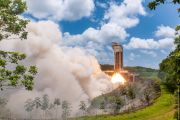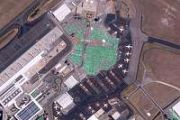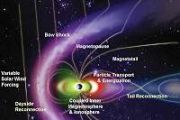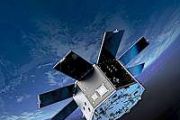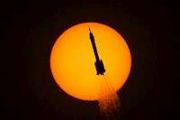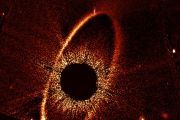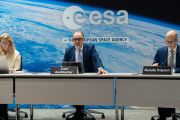
Copernical Team
Surprise - Again! Asteroid Bennu Reveals its Surface is Like a Plastic Ball Pit
 After analyzing data gathered when NASA's OSIRIS-REx spacecraft collected a sample from asteroid Bennu in October 2020, scientists have learned something astonishing: The spacecraft would have sunk into Bennu had it not fired its thrusters to back away immediately after it grabbed dust and rock from the asteroid's surface.
It turns out that the particles making up Bennu's exterior are so l
After analyzing data gathered when NASA's OSIRIS-REx spacecraft collected a sample from asteroid Bennu in October 2020, scientists have learned something astonishing: The spacecraft would have sunk into Bennu had it not fired its thrusters to back away immediately after it grabbed dust and rock from the asteroid's surface.
It turns out that the particles making up Bennu's exterior are so l Porosity of the moon's crust reveals bombardment history
 Around 4.4 billion years ago, the early solar system resembled a game of space rock dodgeball, as massive asteroids and comets, and, later, smaller rocks and galactic debris pummeled the moon and other infant terrestrial bodies. This period ended around 3.8 billion years ago. On the moon, this tumultuous time left behind a heavily cratered face, and a cracked and porous crust.
Now MIT scie
Around 4.4 billion years ago, the early solar system resembled a game of space rock dodgeball, as massive asteroids and comets, and, later, smaller rocks and galactic debris pummeled the moon and other infant terrestrial bodies. This period ended around 3.8 billion years ago. On the moon, this tumultuous time left behind a heavily cratered face, and a cracked and porous crust.
Now MIT scie NASA mirrors on ESA pathfinder to enhance lunar navigation

NASA will supply the upcoming European Space Agency (ESA) Lunar Pathfinder satellite with an array of laser retroreflectors, mirrored devices that reflect light back at its source. The retroreflectors will validate navigation capabilities that will be critical to the Artemis missions and future lunar exploration.
Three of the four instruments on NASA's Webb telescope ready for science
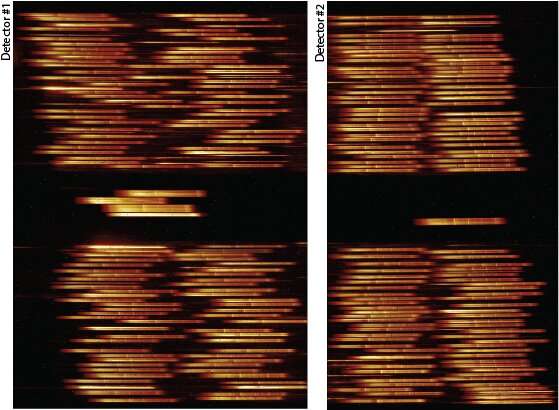
Cosmic targets for Webb Telescope’s first images announced
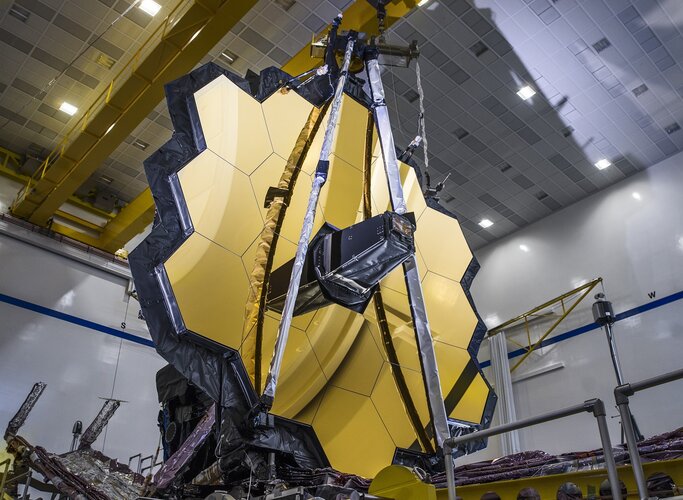
The NASA/ESA/CSA James Webb Space Telescope will soon reveal unprecedented and detailed views of the Universe, with the upcoming release of its first full-colour images and spectroscopic data.
Discs for fault detection
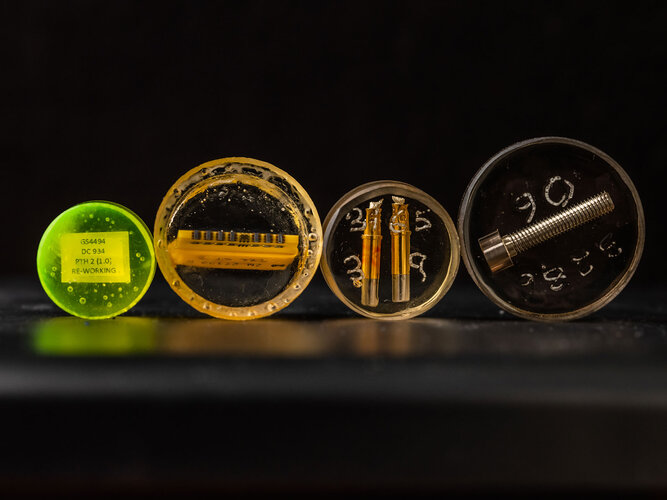 Image:
Discs for fault detection
Image:
Discs for fault detection Week in images: 04-08 July 2022

Week in images: 04-08 July 2022
Discover our week through the lens
Using lasers and 'tow-trucks', Japanese firms target space debris

From laser beams and wooden satellites to galactic tow-truck services, start-ups in Japan are trying to imagine ways to deal with a growing environmental problem: space debris.
Junk like used satellites, parts of rockets and wreckage from collisions has been piling up since the space age began, with the problem accelerating in recent decades.
"We're entering an era when many satellites will be launched one after another. Space will become more and more crowded," said Miki Ito, general manager at Astroscale, a company dedicated to "space sustainability".
"There are simulations suggesting space won't be usable if we go on like this," she told AFP. "So we must improve the celestial environment before it's too late."
The European Space Agency (ESA) estimates that around one million pieces of debris larger than a centimeter—big enough to "disable a spacecraft"—are in Earth's orbit.
SwRI demonstrates machine learning tool to efficiently process complex solar data
 Big data has become a big challenge for space scientists analyzing vast datasets from increasingly powerful space instrumentation. To address this, a Southwest Research Institute team has developed a machine learning tool to efficiently label large, complex datasets to allow deep learning models to sift through and identify potentially hazardous solar events. The new labeling tool can be applied
Big data has become a big challenge for space scientists analyzing vast datasets from increasingly powerful space instrumentation. To address this, a Southwest Research Institute team has developed a machine learning tool to efficiently label large, complex datasets to allow deep learning models to sift through and identify potentially hazardous solar events. The new labeling tool can be applied Shenzhou-14 Taikonauts conduct in-orbit science experiments, prepare for space walks
 Scientific endeavors aboard China's space station are expected to bear fruits, as the Shenzhou-14 taikonauts have devoted more time to microgravity experiments on the orbiting core module Tianhe since entering it a month ago.
China's space station is designed to be a versatile space lab, capable of accommodating 25 experiment cabinets for scientific exploration. The China Manned Space Agen
Scientific endeavors aboard China's space station are expected to bear fruits, as the Shenzhou-14 taikonauts have devoted more time to microgravity experiments on the orbiting core module Tianhe since entering it a month ago.
China's space station is designed to be a versatile space lab, capable of accommodating 25 experiment cabinets for scientific exploration. The China Manned Space Agen 










